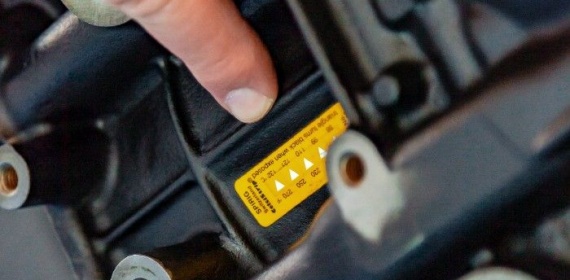Events
All news
Diesel Engine Oil Consumption

Investigation into oil consumption in diesel engines shows that the major reasons for oil consumption, after excluding obvious causes such as incorrect machining, assembly or bad driving, are: Bedding-In Authorities’ estimate that some 90% of oil consumption problems following the overhaul of diesel engines occur as a result of incorrect running-in procedures. Engine manufacturers have specific “break-in” procedures for their new engines. In the majority of instances, these extend to rebuilt engines both for bench or “in-frame” overhauls. Without exception engine manufacturers are emphatic that engines should be progressively put under load at an early stage. Prolonged periods of idling are detrimental to subsequent engine performance, and increase blowby and oil consumption. Most diesel engines should be run-in initially to full load on schedules up to 2.5 hours duration maximum. Rebuilders should make themselves aware of the particular engine manufacturers’ recommendations for running-in procedures and advise the operator accordingly. In many instances, incorrect running-in procedures will not only delay the bedding-in process but may lead to a condition whereby the situation is irrecoverable unless major remedial action, including strip down is resorted to.
Cylinder Bore Glazing
Glazing of the cylinder bores is a likely result of incorrect running-in procedures. Cylinder bore glazing is a result of retardation of the running-in process, or of prolonged light load running and leads to a formation of a surface coating or skin derived from chemicals present in the oil and fuel. If one examines the cylinder bores, it is not unusual to see the hone crosshatch markings beneath a super- smooth, highly polished “varnish like” layer which results from a combination of the factors mentioned above, so the lubricant additive choice, or perhaps the flashpoint of various fuel fractions could well be one of the determining factors. Excessive piston crown and top land deposits arise as a result of extensive periods of idling or light running which should be avoided at all costs during the running-in period. During engine idling periods the fuelling tends to be badly matched to the airflow resulting in idle smoke, but more importantly the formation of excess carbon. With the necessary top land clearance called for by engine needs for full power operation the carbon particles find their way into the top land crevice and glazing tends to follow soon afterwards. Modern diesel engine lubricants contain significant quantities of anti-wear additives and can give rise to problems of bedding-in if used as “first fill” after engine reconditioning. This is particularly true with chrome plated piston rings with which the majority of diesel engines are now fitted. Major oil companies produce S.H.P.D. Oils (Super High Performance Diesel Oil) and does not recommend their use as a “first fill” so the oil manufacturers’ recommendations should always be referred to. Many oil companies now produce running-in oils and oil and fuel additives to overcome the problem of bore glazing. Reference should always be made to the manufacturer’s instructions before use.
Cylinder Bore Polishing
Cylinder bore polishing is of a different nature and usually occurs much later in the operating life of the engine but the results my still give rise to oil consumption and in severe cases, a breakdown of the oil film leading to scuffing and seizure. Turbocharged engines operating at high ratings may give rise to a bore polishing condition. Inlet air temperatures are high and tests have shown that surface temperatures are a major factor in the formation of a polish. Prolonged operation on a well-known turbo engine tested at 355 HP resulted in 5% of the bore area exhibiting a polish; raising the power to 360 HP increased the polish area to 14% in the same time period. Fig.1 Cylinder bore polishing arises from the excessive deposits of hard carbon on the piston top land (Fig. 1). Bore polishing tends to be selfevident. It is characterised by a bright, smooth “mirror-like” surface with elimination of the crosshatch-honing pattern (Fig. 2). The photographs show a cylinder liner and its mating piston, vividly illustrating the bore polishing condition present on the thrust faces. The S.H.P.D. Oils previously mentioned and available from major oil companies are to be recommended for their ability to prevent cylinder bore polishing and show significant oil control advantage. Always refer to the oil manufacturer’s recommendations on use for control of specific problems. N.B.
Source : SERVICE ENGINEERING BULLETIN SB2136.1 Federal Mogul
Latest news
-

Obrada blok motora: naglasak na površinu
18.11.2024 -

EGR valves
03.11.2023 -

AMC Ford 1.0 Ecoboost
12.11.2018







